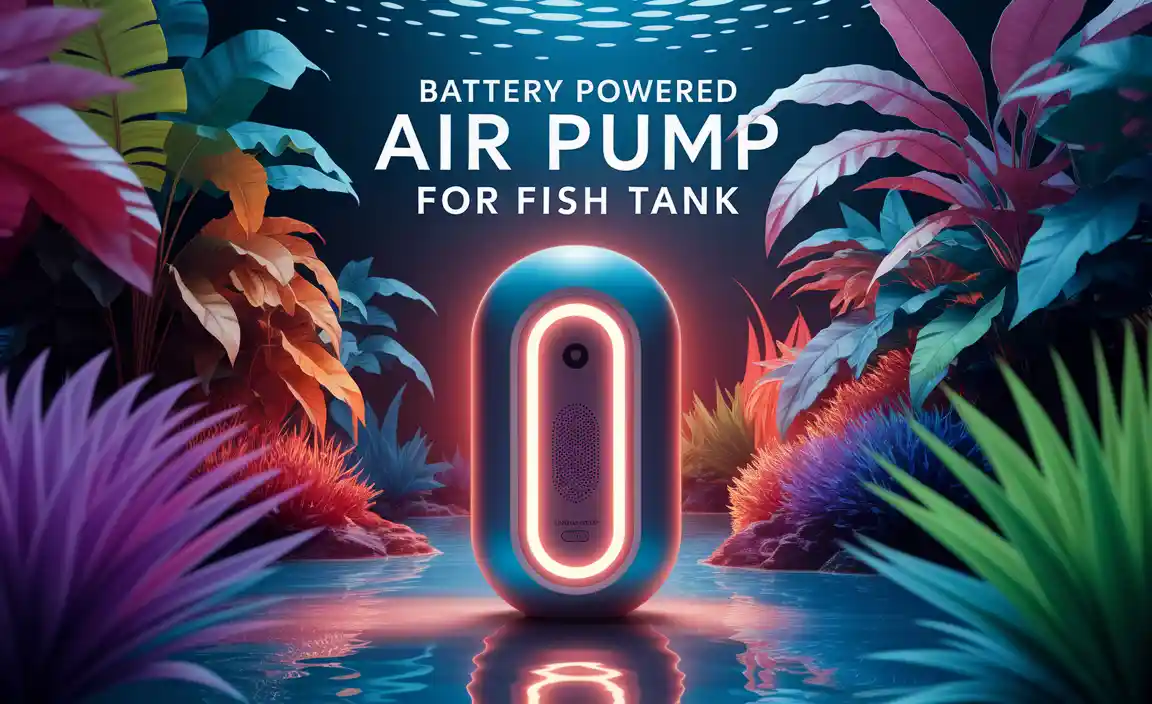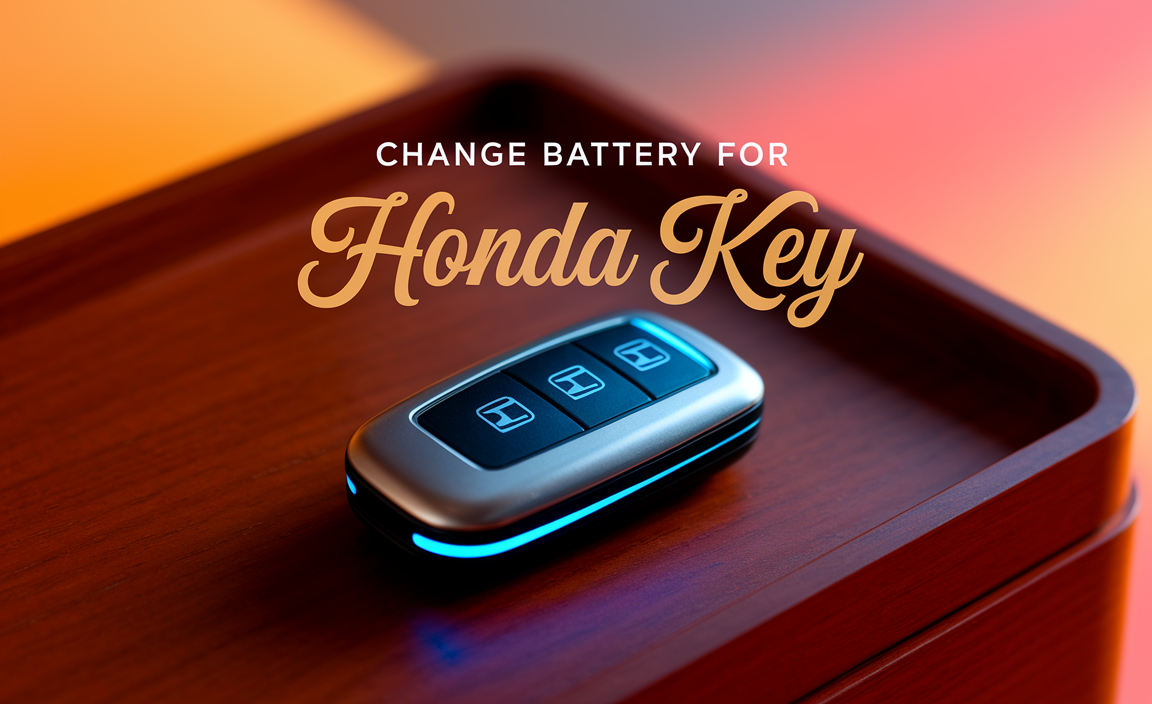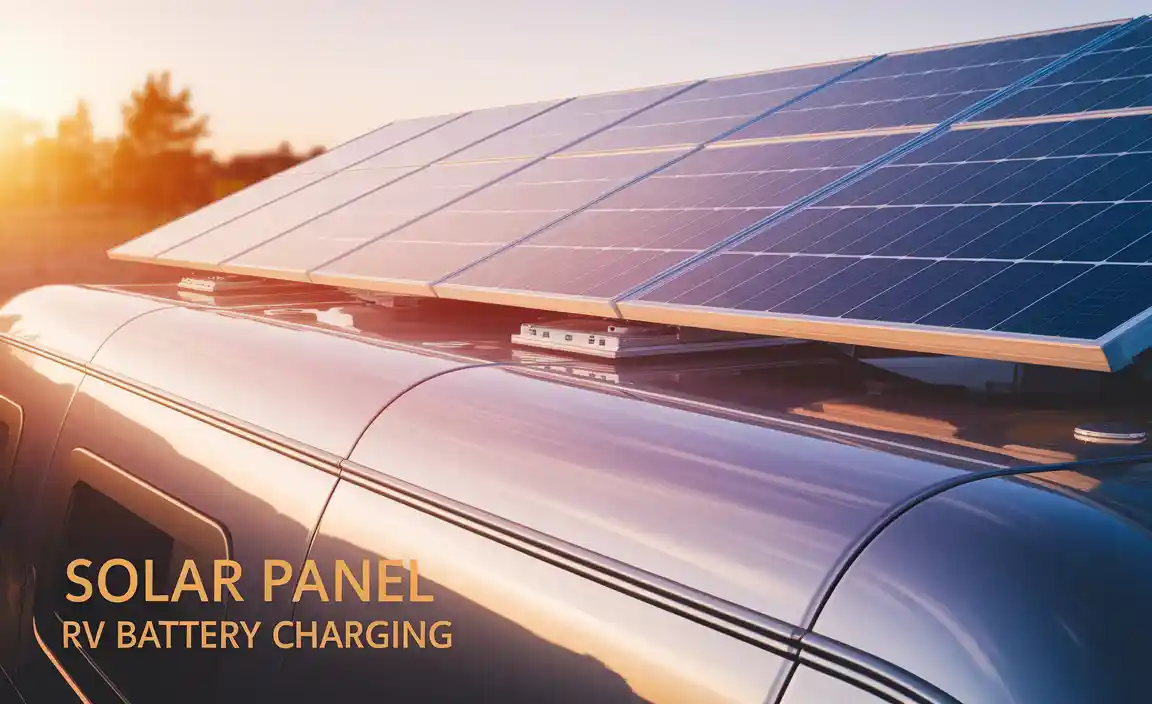Quick Summary: Learn how to safely and effectively wire two 12V batteries in series to create a 24V power system. This guide provides straightforward, step-by-step instructions for beginners, ensuring a reliable 24V output for your needs.
How to Safely Wire 2 12V Batteries for 24V: An Essential Guide
Are you looking to boost the power for something special, maybe a trolling motor on a boat or an RV system? Often, you can get more voltage by using a couple of standard 12V batteries together. It sounds a bit technical, but wiring two 12V batteries to make 24V is simpler than you might think. Many people feel a bit unsure about messing with electrical systems, especially car batteries, but this guide is here to make it easy and safe. We’ll walk through exactly how to connect them so you get that extra power you need, reliably and without worry. Let’s get started on building your 24V system!
Why You Might Need 24V Power
Sometimes, the devices you want to power need more juice than a single 12V battery can provide. Think of larger appliances on an RV, a more powerful trolling motor for fishing, or certain types of equipment. Instead of buying a single, expensive 24V battery, you can often achieve the same voltage by linking two identical 12V batteries. This is a common and budget-friendly solution.
The basic idea is like connecting two garden hoses end-to-end to get a longer stream of water. In electricity, when you connect batteries in series, it’s the same principle: you’re adding their voltages together.
Understanding Battery Connections: Series vs. Parallel
Before we get our hands dirty, it’s important to know there are two main ways to connect batteries: series and parallel. We’re focusing on series today, but it’s good to understand the difference.
- Series Connection: This is what we’ll use to get 24V. You connect the positive (+) terminal of one battery to the negative (-) terminal of the other. This adds the voltages together (12V + 12V = 24V) while keeping the amp-hour (Ah) rating the same as one battery.
- Parallel Connection: This is used to increase capacity (run time) while keeping the voltage the same. You connect the positive (+) terminals together and the negative (-) terminals together. If you have two 12V batteries in parallel, you’ll still have 12V, but with twice the amp-hour rating.
It’s crucial to use identical batteries when connecting them, whether in series or parallel. This means they should be the same brand, the same voltage, and the same amp-hour (Ah) rating. Mismatched batteries can lead to uneven charging and discharging, which can damage them and reduce performance.
Essential Tools and Materials
Gathering the right tools and materials before you start will make the process much smoother and safer. Here’s what you’ll need:
- Two Identical 12V Batteries: As mentioned, make sure they are the same type (e.g., both deep-cycle, both starting), brand, and Ah rating.
- Jumper Cables or Battery Interconnect Cables: These should be thick enough to handle the expected current. Battery interconnect cables are specifically designed for this purpose and are often the best choice. Ensure they have appropriate connectors for your battery terminals.
- Wrench Set or Plier Set: To tighten and loosen battery terminal bolts. Make sure the size fits your battery terminal clamps.
- Safety Glasses: Always protect your eyes when working with batteries, as they can contain corrosive acid and potentially release explosive gases.
- Gloves: To protect your hands from dirt and potential acid.
- Wire Brush or Battery Terminal Cleaner: To clean battery terminals for a good connection.
- Battery Terminal Protection Spray or Grease (Optional): To prevent corrosion after connections are made.
- Multimeter: To test your connections and ensure you’re getting the correct voltage.
Step-by-Step Guide: Wiring 2 12V Batteries for 24V
Following these steps carefully will help you achieve a safe and effective 24V battery setup. Remember, safety first!
Step 1: Prepare Your Workspace and Batteries
Find a well-ventilated area for this work. Batteries can release hydrogen gas, which is flammable. Make sure the batteries are in a stable location where they won’t tip over. Clean the area around the batteries and ensure there’s nothing conductive nearby that could accidentally short-circuit the terminals.
Step 2: Safety First – Disconnect Everything!
If the batteries are currently connected to anything (like a charger or a device), disconnect them completely. Power should be off. It’s also a good idea to disconnect any existing connections on the batteries themselves if they are connected within a system. This ensures there’s no current flowing while you’re working.
Step 3: Clean the Battery Terminals
Corrosion on battery terminals is a common problem that can prevent good electrical contact. Use a wire brush or a dedicated battery terminal cleaner to scrub the positive (+) and negative (-) terminals on both batteries until they are bright and clean. A clean connection is essential for efficient power transfer.

Keep your battery terminals clean for the best connection.
Step 4: Position the Batteries
Place the two 12V batteries side-by-side or close enough so that your interconnect cables can easily reach between them. Ensure they are positioned securely and won’t move.
Step 5: Make the Series Connection
This is the core step to create 24V. You’ll use a jumper cable or interconnect cable to connect the positive (+) terminal of Battery 1 to the negative (-) terminal of Battery 2.
Let’s label our batteries:
- Battery 1: Has terminals labelled “-” and “+”.
- Battery 2: Has terminals labelled “-” and “+”.
Here’s how to connect them for series:
- Take your interconnect cable.
- Connect one end to the positive (+) terminal of Battery 1.
- Connect the other end of the SAME cable to the negative (-) terminal of Battery 2.

Connecting the positive of one to the negative of the other creates a series connection.
Step 6: Connect Your Load or Charger
Now that the batteries are wired in series for 24V, you’ll connect your device or charger to the remaining open terminals. These are:
- The negative (-) terminal of Battery 1
- The positive (+) terminal of Battery 2
These two points will be your 24V output. Connect the positive (+) lead of your device or charger to Battery 2’s positive terminal, and the negative (-) lead to Battery 1’s negative terminal.
It’s critical that the interconnect cable used in Step 5 is distinct from the cables connecting to your load. If you are using jumper cables instead of dedicated interconnects, ensure they are of sufficient gauge (thickness) for the expected draw. A common recommendation for battery cables is 4-gauge or thicker, depending on the current. Consult your device’s power requirements or a professional if you are unsure.
Step 7: Double-Check All Connections
Before applying power or testing, visually inspect every connection. Ensure all bolts are snug, but not so tight that you strip the threads. The cables should be securely attached to the terminals, and there should be no loose wires or strands.
Step 8: Test the Voltage
This is where your multimeter comes in handy. Set your multimeter to measure DC voltage. Place the red probe on the positive (+) terminal of Battery 2 (where your load will connect) and the black probe on the negative (-) terminal of Battery 1 (also where your load will connect).
You should read approximately 24 volts. A reading slightly higher or lower is normal due to battery state of charge and temperature, but it should be close to 24V.

Confirm your 24V output with a multimeter.
Step 9: Apply Protection (Optional)
Once you’re satisfied with the connections and voltage, you can apply battery terminal protection spray or a thin layer of dielectric grease to the terminals and cable connections. This helps prevent corrosion and ensures good conductivity over time. This is especially useful in damp or humid environments.
Important Safety Precautions
Working with batteries, especially car batteries, requires a strong emphasis on safety. Here are critical points to remember:
- NEVER Short-Circuit: Never allow a metal tool or object to bridge the terminals of a single battery or the combined terminals of your 24V system. This can cause a massive spark, battery explosion, and severe burns.
- Ventilation is Key: Always work in a well-ventilated area. Battery acid can produce hazardous fumes, and the hydrogen gas released during charging is highly flammable.
- Wear Protective Gear: Always wear safety glasses and gloves. Battery acid is highly corrosive and can cause blindness or severe skin damage.
- Use Identical Batteries: As stressed before, using identical batteries is crucial. Mismatched batteries can lead to premature failure and unsafe operating conditions.
- Proper Cable Gauge: Ensure your interconnect cables are thick enough for the current your system will draw. Using undersized cables can lead to overheating and fire hazards. For higher current applications, consult resources like the Engineering Toolbox for wire gauge recommendations.
- Charge Correctly: When charging your 24V system, you will need a 24V charger, or two 12V chargers (one for each battery), ensuring they are compatible and not connected to each other. A single 24V charger is the simplest and safest option.
- Handle with Care: Batteries are heavy. Lift them carefully to avoid injury.
Troubleshooting Common Issues
Even with careful work, you might run into a hitch. Here are a few common problems and how to solve them:
- No Voltage Reading or Low Voltage:
- Check all connections. Are they tight?
- Are the terminals clean?
- Did you connect positive to negative for series? Double-check your jumper cable.
- Are the batteries old or discharged? Try charging them individually.
- Sparks When Connecting:
- A small spark when connecting the final cable to the load is often normal, especially if batteries are fully charged. However, large, persistent sparks could indicate a short circuit or a problem with your load. Double-check all wiring.
- Batteries Getting Hot:
- This can indicate an overloaded system, undersized cables, or a failing battery. Disconnect immediately and investigate. Ensure your load is within the capacity of your battery setup.
- Uneven Discharge/Charging (if problems persist):
- This is a strong indicator that the batteries are not identical, or one is failing. Replace the suspect battery if possible, or replace both if they are old.
When to Consider Professional Help
While wiring batteries in series is a manageable DIY project, there are times when calling a professional is the best course of action. If you’re dealing with very high-amperage systems, complex electrical setups (like in a vehicle’s main power system), or if you feel unsure or uncomfortable at any point, it’s wise to consult with a qualified auto electrician or a power systems specialist. They have the expertise and tools to ensure the job is done safely and correctly.
Maintaining Your 24V Battery System
Once your 24V system is set up, proper maintenance will ensure its longevity and reliability. Here are a few tips:
- Regular Cleaning: Keep the battery terminals clean and free of corrosion.
- Secure Connections: Periodically check that all connections are still tight. Vibrations can loosen them over time.
- Monitor Voltage: Use a multimeter occasionally to check the health of your batteries.
- Proper Charging: Always use a charger specifically designed for 24V systems when charging the combined batteries. If charging individually, ensure the charger is suitable for the battery type and voltage. For optimal battery health, consider using a smart charger that can regulate charging cycles. Learn more about battery charging best practices from the U.S. Department of Energy.
- Avoid Deep Discharge: Try not to let your batteries drain completely, as this can reduce their lifespan.
- Temperature: Extreme temperatures can affect battery performance and lifespan. Try to keep batteries in a moderate temperature range.
Frequently Asked Questions (FAQ)
Q1: Can I wire any two 12V batteries together to make 24V?
A1: Ideally, you should use two identical batteries – same brand, same model, and same amp-hour (Ah) rating. Using different batteries can lead to uneven charging and discharging, which can damage them and reduce the overall performance and lifespan of your system.
Q2: What happens if I connect the positive (+) to positive (+) and negative (-) to negative (-) for 24V?
A2: Connecting positive to positive and negative to negative of two 12V batteries creates a parallel connection, not a series connection. This will result in a 12V system with double the amp-hour capacity, not a 24V system. For 24V, you must connect the positive of one battery to the negative of the other.
Q3: How thick should the cables be for connecting 12V batteries in series?
A3: The thickness, or gauge, of the cable depends on the amount of current (amperage) your system will draw. For typical applications like trolling motors or RV power, 4-gauge or 2-gauge cables are common and often recommended. Using undersized cables can cause them to overheat and pose a fire risk. Always consult your device’s manual or a professional if you’re unsure.
Q4: Do I need a special charger for a 24V system?
A4: Yes, you will need a 24V battery charger to charge the batteries when they are connected in series for 24V. Alternatively, you could disconnect them and charge each 12V battery individually with a 12V charger, but simultaneous charging with a 24V charger is more convenient.
Q5: What is the risk of explosion when wiring batteries?
A5: The main risk of explosion comes from hydrogen gas, which batteries (especially lead-acid types) can release during charging or deep discharge. This gas is highly flammable. Always ensure good ventilation and avoid any sparks or open flames near batteries. Properly connecting batteries and avoiding short circuits significantly reduces this risk.
Q6: Can I use one old battery and one new battery?
A6: It’s strongly advised against using batteries of different ages or states of health. The older battery will likely have less capacity and higher internal resistance. This will mean the new battery will do most of the work, leading to uneven wear, reduced overall performance, and premature failure of both batteries. It’s best to replace batteries in pairs.
Q7: What does Ah mean on a battery?
A7: Ah stands for Ampere-hour, which is a measure of a battery’s capacity. It indicates how much current a battery can deliver over a certain period. For example, a 100Ah battery can theoretically provide 100 amps for one hour, or 10 amps for ten hours, before being discharged. When you connect batteries in series for higher voltage, the Ah rating remains the same as that of a single battery.
Conclusion
Wiring two 12V batteries in series to create a 24V power source is a valuable skill for many DIY enthusiasts and power users. By following these straightforward, safety-focused steps, you can confidently achieve the higher voltage required for your projects. Remember to always





